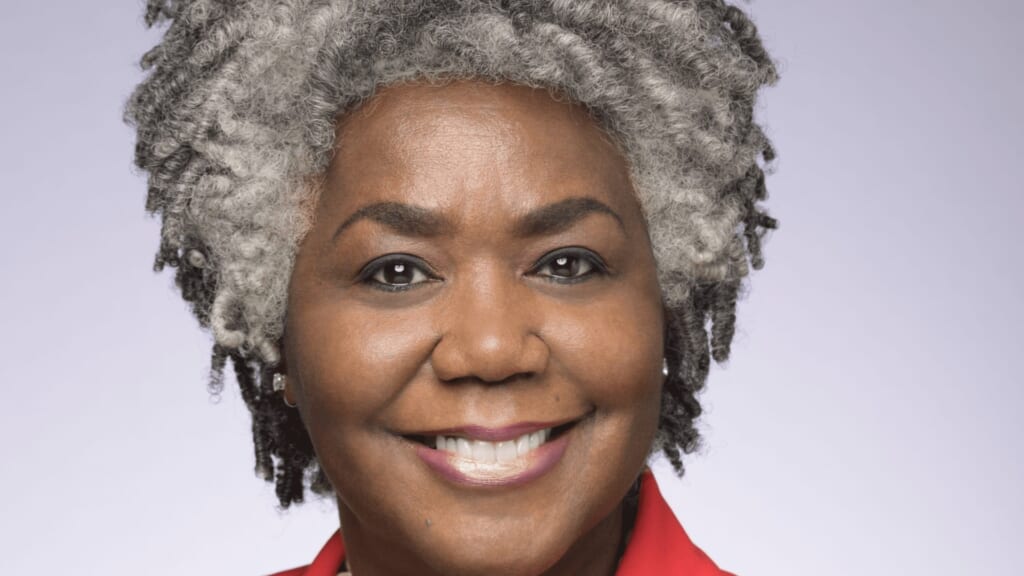Dr. Annelle Primm discusses mental health among Black students returning to school this fall
Dr. Primm is the Senior Medical Director of the Steve Fund, a national organization that supports the mental and emotional well-being of students of color
With schools around the country returning to in-person learning this week, Black students and other students of color face an amplified set of challenges navigating educational institutions with environments that can be harmful to their mental health.
To gain insight into this multifaceted issue, theGrio sat down with Dr. Annelle Primm, a nationally recognized expert in the mental health of marginalized students. Dr. Primm works closely with schools and students of color nationwide as the Senior Medical Director of the Steve Fund, an organization “dedicated to the mental health and emotional well-being of students of color.”
Dr. Primm explained that a student’s mental health can be influenced by their unique set of “social determinants,” the individual’s social and economic conditions that are either conducive or harmful to a healthy mental state.
“Social determinants of mental health include things like exclusion and alienation,” Dr. Primm said. “You could certainly point to racial segregation as an example that certainly is not a recipe for mental health, to be excluded, to be isolated, to be discriminated against.”
“There are other categories of social determinants of mental health that revolve around education, and we know that when education is substandard and under-resourced, that can have an impact,” Dr. Primm added. “The same goes for when housing is substandard, or when people live in areas where there is a lack of access to healthy food, as well as access to health care.”

Dr. Primm added that students of color, particularly Black students, experience “disproportionately worse” conditions in each of these categories that determine mental health, resulting from long-standing systems of oppression developed throughout “our nation’s history of enslavement.”
In 2015, the Steve Fund conducted a national online Harris Poll study in partnership with nonprofit suicide prevention and emotional health organization the JED Foundation to determine disparities in the on-campus experiences of students of color in comparison to their white counterparts.
Polling over 1,500 first-year college students with equal samples collected across racial and ethnic groups, the study found that students of color are significantly less likely to describe their campus as inclusive compared to white students (28% to 45%) and are more likely to indicate that they often feel isolated on campus (46% to 30%).
Dr. Primm said that students of color are not only experiencing mental health issues at higher rates, their educational institutions also rarely provide adequate resources for these students to mitigate the damaging effects of these illnesses.
In 2017, the Steve Fund partnered with JED to develop an Equity in Mental Health Framework (EMHF) comprised of 10 “actionable recommendations and key implementation strategies” to help colleges and universities “strengthen their activities and programs to address the mental health disparities facing students of color.”
Recommendations include:
- Identifying and promoting the mental health and well-being of students of color as a campus-wide priority
- Engaging students to provide guidance and feedback on matters of student mental health and emotional wellbeing
- Actively recruiting, training and retaining a diverse and culturally competent faculty and professional staff
- Creating opportunities to engage around national and international issues/events
After implementing these strategies at 18 colleges and universities nationwide through a two-year pilot program, the Steve Fund and JED found that successful outcomes were reached when senior administrators of the schools bought into implementing the recommendations across departments.
“That was before the pandemic,” Dr. Primm said, noting that mental illnesses among Black students have only been exacerbated by the isolation and stress caused by COVID-19 restrictions and the Steve Fund has experienced an uptick in requests for mental health resources for students of color since the pandemic began.
In 2020, the Steve Fund partnered with the University of Michigan’s Healthy Minds Study to “understand the mental health status and needs of college students of color during the pandemic.”
The study found that among the students of color who used mental health services prior to the pandemic, 70% found those services harder to access since the pandemic began. Black and Latinx students were also “less likely” to report viewing their professors as sources of support, and students of color experienced “heightened emotions and stress” from being “at the forefront of movements for racial justice.”
“At a time when they need it the most, they can’t get what they need,” Dr. Primm said.
“After the pandemic occurred and the killing of George Floyd was really kind of a flashpoint in terms of national attention to these issues, the Steve Fund developed a crisis response task force of leaders in higher education and even corporate leaders, just to weigh in on some of the specific needs related to these twin pandemics, if you will,” Dr. Primm added.
“We developed a set of recommendations, specifically zeroing in on issues such as the need to increase trust, the need to pay attention to racial trauma, and the need to create engaging and welcoming environments, both inside the classroom and outside,” she continued.
The new recommendations and curricula will be rolling out to educational institutions soon, Dr. Primm said, adding that even with the added resources available to students of color, a cultural issue still remains in many communities that are discouraging Black students and other students of color from speaking up and seeking help.
“With the elevation in depression, anxiety, and stress in people of color and Black students, what is also disturbing is that they remain less likely than their white counterparts to seek mental health services,” Dr. Primm said.
Dr. Primm said that many mental illnesses are still not taken as seriously as an ailment such as a broken bone, due to mental illnesses often being less outwardly visible.
“The attitudes that revolve around mental health and mental health help-seeking continue to be a challenge in the Black community,” Dr. Primm said. “What that can result in is them suffering in silence and not getting the help that they need. So, it’s sort of a double whammy — more psychological distress and less help-seeking for it, with some not knowing where to go to get help.”
With many in-person mental health clinics and centers closed during the pandemic, Dr. Primm said that the increased reliance on technology has elevated access to mental health resources for some and decreased it for others who cannot easily access digital resources such as computers, phones, reliable internet connectivity and more.

With the available digital means, Dr. Primm said clinicians and practitioners have utilized virtual methods referred to as “telehealth” to provide counseling and support to individuals experiencing mental illnesses.
“It made it a lot more convenient and accessible for folks who may have been reluctant or might not have had access before because of transportation or distance, especially for people living in rural communities where there might be a lack of available mental health professionals nearby,” Dr. Primm said. “Telehealth has removed one of the barriers for many people.”
Dr. Primm said that alongside the increase in depression and anxiety she has seen in recent years, she has also seen an increase in the awareness of how prevalent mental illnesses are among Black students, and among Black people in general.
“With all of the racially traumatic things that have happened over the past year and have been in the collective consciousness, if you will, I’ve noticed that people are more aware of feeling that trauma in a real way and acknowledging it, and in some cases seeking help for it,” Dr. Primm said.
“In terms of mental health support, the good news is that people are looking for it, so that’s, I think, an important step,” Dr. Primm said. “That just adds to, I think, the importance of organizations like the Steve Fund and others that are really specializing in the mental health and well being of young people and young people of color in particular at a time like this, when the pressures are high, coming from more than one direction, coming from COVID, the economic impacts on the loss of family members, the racial tensions, and the systemic injustice.”
“The Steve Fund and other organizations will continue to make the various resources for mental health support known and it’s good that the media such as theGrio would do a story like this to continue to raise awareness around the nation,” Dr. Primm said. “There’s no health without mental health, so in fostering healthy communities, this is one really important aspect that has been so challenged by the current context.”
If you or a loved one is experiencing a mental illness or are seeking additional resources, text STEVE to 741741 to access one of the Steve Fund’s culturally trained Crisis Text Line counselors, or visit their website here for a full list of programs, services, student stories and more.
Annelle B. Primm M. D., MPH has served as Physician Executive at the American Psychiatric Association, Senior Psychiatrist Adviser to Urban Behavioral Associates, and as a medical educator, administrator, and clinician at Johns Hopkins Hospital Community Psychiatry Program.
Have you subscribed to theGrio’s new podcast “Dear Culture”? Download our newest episodes now!
TheGrio is now on Apple TV, Amazon Fire, and Roku. Download theGrio today!
The post Dr. Annelle Primm discusses mental health among Black students returning to school this fall appeared first on TheGrio.
from TheGrio https://ift.tt/3BBnxxn
No comments: